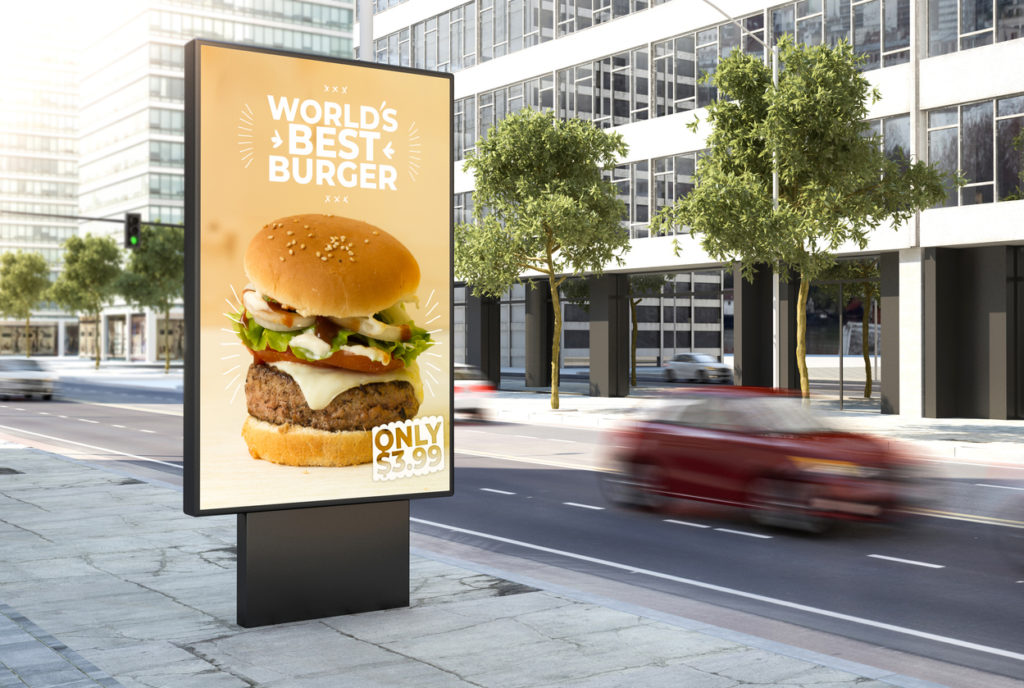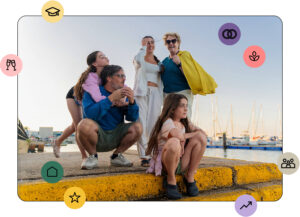by Joel Livesey, Lead Senior Director, Inventory and Partnerships EMEA at The Trade Desk
With Digital Out of Home (DOOH) now mainstream, ads can now be served with the perfect timing, in the perfect context. Large, medium and small businesses are now able to get their products and services in front of customers through an agile, effective and exciting channel, and with the IPA Bellwether Q2 2022 report continuing to demonstrate the strength advertising budgets have enjoyed this year, marketers are in good stead to make the most of it.
While an effective DOOH strategy should be at the top of marketers wish lists, it needs to be done right to help achieve the best results.
OOH marketing in a flexible digital era
DOOH can prove effective at the beginning, middle or end of the customer journey – there are no limits to how and when ads can be served. By responding to a range of external triggers, advertisements can be agile and reactive in ways that are more effective in impacting consumer behaviour.
KFC’s DOOH campaign in South Africa, for example utilised timed targeting to ensure the most relevant products were advertised to customers at various points in the day. Consumers only saw popular breakfast items in the morning, and popular lunch items during the midday rush.
This innovation isn’t a one off – Piriton demonstrated similar ingenuity by timing their display ads for hayfever tablets during days where pollen counts were higher, offering their product to hayfever sufferers when they needed it most.
Akama Davies, Global Practice Lead for DOOH at Xaxis explained that: “OOH adverts are in an exciting new era, and programmatic and digitalisation has made them more relevant than ever before. So, when considering a DOOH strategy, marketers across B2B and B2C sectors will do well to ask themselves what external triggers might best match with their product – from the physical conditions, all the way to trending news.”
Budgets: Who can afford DOOH?
DOOH is not exclusive to the largest budgets, and can be optimised to accommodate every type of spend. The flexibility that comes with DOOH means that advertising no longer has to follow the maxim of ‘go big or go home’, but is targeted and precise.
While KFC’s South African DOOH campaign used a big budget (utilising 150 advertising screens for maximum reach) DOOH could equally be used by a small local bakery looking to advertise when highstreet footfall is at its highest. Smaller businesses often require the flexibility of shifting budgets to channels that perform well at different times of year. And, display ads can form part of their tool box, with minimum spends required to secure display cost decreasing with the rise of digitalisation.
But businesses should tread carefully, as “to get the most of a DOOH strategy, all businesses must consider what they want to get out of DOOH, and need to work with the right partners to ensure they invest properly in ensuring adverts are responding to the right triggers at the right times,” explains Alexie Lopez, Director of DSP Partnerships at Broadsign.
DOOH advertising in the omnichannel experience
Davies stressed that “the ability of marketers to buy DOOH advertising programmatically means that the channel can seamlessly fit into the omnichannel experience.” The same consumer could be shown ads for one product via their mobile device on Monday, their favourite streaming service on Wednesday, and through a DOOH ad on their Friday morning commute – in an interchangeable order. This gives marketers the ability to monitor campaigns across all platforms, activating, re-prioritising and adapting DOOH adverts in conjunction with other channels.
Simultaneously, marketing teams can incorporate insights from metrics such as link, clicks and customer footfall to deduce what is driving buying behaviour, brand engagement and perception – helping to optimise campaigns to the fullest.
DOOH advertising plays a vital part in wider omnichannel campaigns, and savvy marketing leaders will think not only about how a DOOH works effectively alone, but how it fits into an impactful multi-channel campaign, with multiple touch points along a consumer journey.
Campaign measurement – now a reality
OOH campaign measurement has always been a challenge for advertisers, as counting the number of people who walk or drive past a billboard has never been a simple task. However, DOOH has made huge advances in overcoming this issue. As the channel becomes increasingly programmatic, data can be used to quantify the impact of DOOH as a standalone channel. Integration into the omnichannel experience allows for real-time campaign measurement and evaluation, meaning marketers can gain the insights needed to ensure DOOH campaigns are meeting KPIs.
Lopez added: “launching an OOH strategy need not feel like a stab in the dark, and marketers trialling a DOOH strategy should utilise these insights to prove ROI back to the wider business.”
Give DOOH a try
Higher marketing budgets against a backdrop of the cost of living crisis has put advertisers in a unique position, but the golden rule remains – each campaign not only needs purpose, but precise and effective delivery.
DOOH has made this possible for out of home. It gives advertisers the creative and financial flexibility to maximise the impact of OOH advertising more than ever before. With the right understanding of DOOH, an optimised budget, and a plan to place it within the omnichannel experience – advertisers can utilise DOOH as an efficient and effective communications channel.












